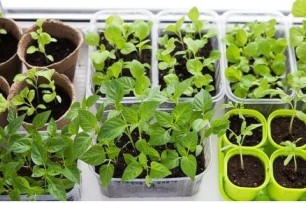Blog Details - Magma HDI

The complete guide to growing an indoor vegetable garden 10th January 2022
With increased awareness about the health advantages of organic vegetables, indoor vegetable gardening is becoming rapidly popular. Planting leafy greens indoors has numerous benefits, such as stress reduction, improved air quality in your house, and less carbon dioxide emissions. Imagine getting these benefits by producing your veggies rather than purchasing them from a grocery shop.
Even if indoor gardening is convenient, there are a few pointers to consider if you want to make the most of your space. Here is the guide to help you start your in-house vegetable garden.
1. Choosing a specific location:
Determining where you want to establish a garden in your home is the first step! Your challenge would be creating a healthy and nourishing environment for the plants to grow well, even in enclosed surroundings. Plants need adequate sunlight for nourishment, and the fluctuating room temperature may affect their growth. Therefore, any compact area, such as a windowsill, may work well for the good health of the plants.
2. Take your time and select the ideal plant for your garden:
The selection of plants for indoor gardens is usually considered one of the most critical aspects of the project. If possible, consider plants that are adaptive to an indoor environment and can thrive well in that habitat. Lentils, cherry tomatoes, and herbs are good examples of plants that may be grown indoors with minimal effort. However, not all plants can survive in the limited space available for gardening purposes. In most cases, root vegetables are not suitable for indoor gardens since they require a deeper container for proper growth. However, if you have a terrace or other outdoor space to accommodate large containers, you can grow them in an interior setting.
3. Know how frequently to water your plants:
Water is a crucial ingredient to escalate the growth of vegetables indoors. The quantity and frequency of water widely depend on the plants you have. Every species has a different requirement, and you need to acquaint yourself with the knowledge of all the species you are planning to cultivate.
4. Fertilize regularly but not overly:
The roots of most plants digest the soil, allowing them to take up nutrients and other minerals. Because the plant is growing in an enclosed space, the number of nutrients available can decline over a long period. Fertilization should be done once or twice a week or month, depending on the circumstances. Conduct some initial studies to pick the most effective indoor plant maintenance tips for your indoor garden environment.
5. Understand how much sunlight your plants require:
One of the frequent indoor gardening issues is ensuring that plants have enough natural light for optimal growth. For many veggies and plants, at least 6 hours of direct sunlight each day is required. Fruits that bloom, such as strawberries and tomatoes, need at least 8 hours of direct sunlight each day but benefit from 10 hours per day. Unlike most other plants, leafy greens can survive in situations with just partial exposure to direct sunshine.
Plants need to be cared for just like children. You'll need to show a lot of dedication to succeed at indoor vegetable growing. However, with the proper instruction and the right amount of space and time, you'll be eating delicious vegetables straight from your own backyard in no time!
Maintaining your dream home is similar to cultivating indoor vegetable gardening, requiring a lot of time and effort. Protect your hard-earned property with a home insurance policy. Just as you take care of your indoor plants, home insurance will shield your home from unfortunate mishaps and financial losses.
Click HERE to get more details about our home insurance policy.
Disclaimer: The information provided above is for illustrative purposes only. To get more details, please refer to policy wordings and prospectus before purchasing a policy.

